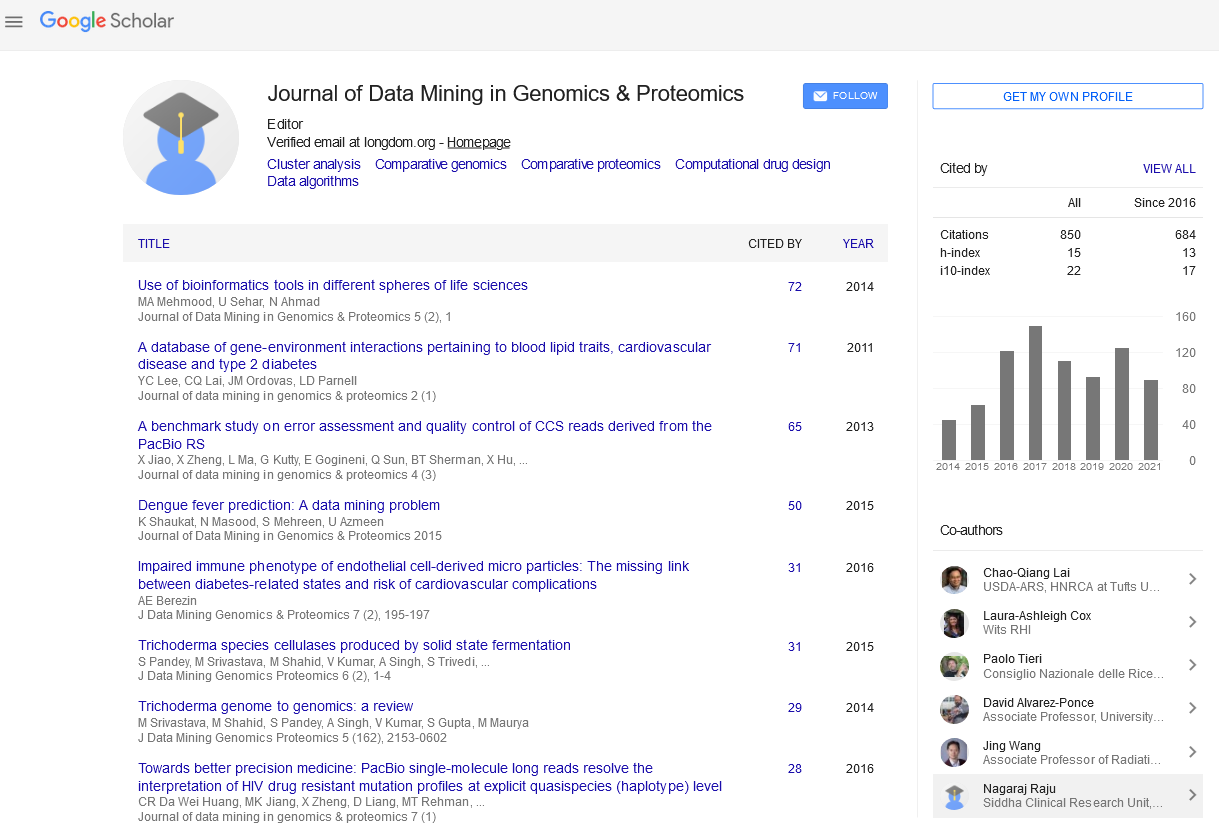PMC/PubMed Indexed Articles
Indexed In
- Academic Journals Database
- Open J Gate
- Genamics JournalSeek
- JournalTOCs
- ResearchBible
- Ulrich's Periodicals Directory
- Electronic Journals Library
- RefSeek
- Hamdard University
- EBSCO A-Z
- OCLC- WorldCat
- Scholarsteer
- SWB online catalog
- Virtual Library of Biology (vifabio)
- Publons
- MIAR
- Geneva Foundation for Medical Education and Research
- Euro Pub
- Google Scholar
Useful Links
Share This Page
Journal Flyer

Open Access Journals
- Agri and Aquaculture
- Biochemistry
- Bioinformatics & Systems Biology
- Business & Management
- Chemistry
- Clinical Sciences
- Engineering
- Food & Nutrition
- General Science
- Genetics & Molecular Biology
- Immunology & Microbiology
- Medical Sciences
- Neuroscience & Psychology
- Nursing & Health Care
- Pharmaceutical Sciences
Abstract
Molecular Modeling and Simulation of Human Stomatin and Predictions for its Membrane Association
Yosuke Kondo, Hideshi Yokoyama, Ikuo Matsui and Satoru Miyazaki
Stomatin is a membrane protein in human red blood cells. The crystal structure, in which the monomeric stomatin from the hyperthermophilic archaeon Pyrococcus horikoshii consists of the α/β domain and the C-terminal α-helical segment, forms a homo-trimer, and stomatin is organized into further high order homo-oligomeric complexes, comprising 9- to 12-mers. To better understand the molecular functions of stomatin, the hypothesis how human stomatin oligomerizes and is associated with cell membranes should be validated. Here, we report what conformations can be generated from the stomatin structure by estimating the flexibility of α-helical segments of human stomatin. And we also simulate how the oligomeric structure of human stomatin interacts with cell membranes. The results showed that the α-helical segments can make flexible movements; the α-helical segment and the α/β domain of the monomer can form a flat structure, and the α-helical segments of the trimer can approach lipid membranes. Based on the flat structure of human stomatin, we proposed a hypothetical oligomeric model to interact with the surface of cell membranes. The oligomeric model well explains the stomatin functions as a scaffolding protein to support the cell membrane.


